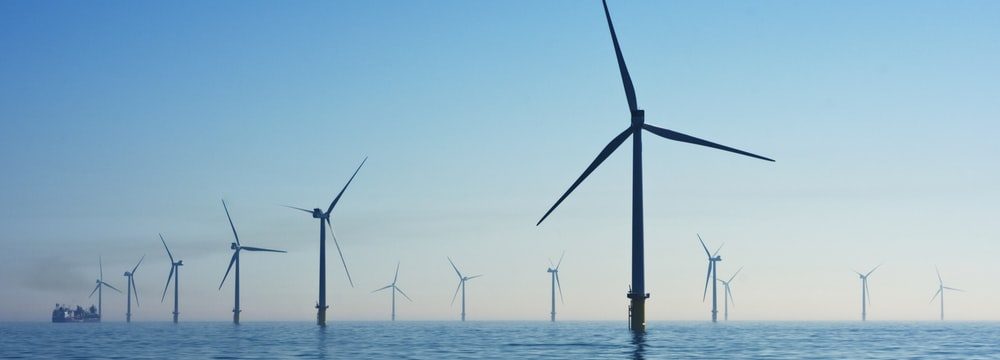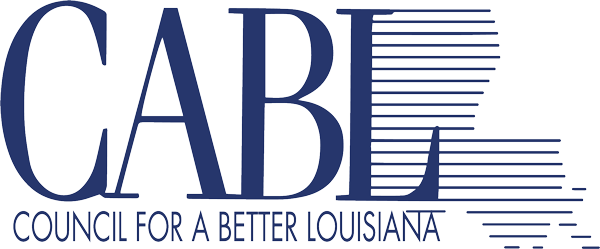
It didn’t get a lot of attention, but last week the Biden administration announced plans to open more than 700,000 acres in the Gulf of Mexico to commercial offshore windfarms. The area being targeted is in federal waters off Lake Charles and Galveston. While it’s just the beginning of a very long process, it could be a glimpse into Louisiana’s energy future – if we’re smart about it.
When we think of energy production in the Gulf, we instinctively envision oil and gas. But as the world moves toward less reliance on fossil fuels and states like Louisiana set goals for “net zero” carbon emissions over the next 30 years, wind energy is becoming more and more a part of the conversation.
Louisiana is well positioned for that energy transition in a number of ways. One is that the relatively shallow waters of the Gulf coupled with average wind speeds off our coast are naturally conducive to wind energy production. Winds speeds off parts of south Texas are a little higher, but experts point to other advantages for Louisiana, especially in the near term.
For one, Louisiana is the only Gulf coast state developing a climate action plan. A product of the Louisiana Climate Initiatives Task Force, it sets a goal of producing 5,000 megawatts of offshore wind power by 2035 – enough to provide electricity to millions of homes. Leaders in Texas also say Louisiana has been more bullish in developing offshore wind power and providing economic incentives to companies interested in investing.
But the state has other advantages, as well, and perhaps ironically, they are a byproduct of our existing offshore oil and gas industry. They include a robust maritime industry, a strong industrial manufacturing base, an experienced offshore workforce, various marine services, an established port infrastructure, and years of experience in offshore research.
Fortunately, we don’t need to invent any of them. They are already highly-developed sectors of our economy that can be reinvented to support development of an emerging offshore wind industry. And it’s already happening to some degree. The nation’s first offshore wind farm was opened in 2016 off the coast of Rhode Island and it’s not a coincidence that three of the companies that played key roles in the fabrication and design of that project are from right here in Louisiana.
Another advantage for the state is that federal law requires that any vessel carrying cargo between U.S. ports and offshore facilities must be built and flagged within the U.S. That’s a big help to our marine industry, and Louisiana-based Edison Chouest Offshore recently announced plans to build the first vessel in the country to specifically service the offshore wind industry in compliance with that law.
State lawmakers have also taken notice of the potential of wind energy. They passed legislation this session requiring the state Department of Natural Resources to develop rules and regulations for administering offshore wind leases, rents, royalties, and decommissioning practices for wind farms in state waters. That puts us ahead of other states, too.
Once again, the good news is that Louisiana, because of its abundance of natural assets and the industries that have grown up around them, is positioned to be a leader in an important part of the energy sector. To our credit, we have also taken actions that, so far, have put us a step ahead of other Gulf Coast states.
But we must continue to move forward with a sense of urgency and commitment to assure that we don’t fall behind. Next door to us a new group called Texas 2036 is developing a plan for the future of the state. It’s issued several blueprints with one focusing on Texas as the “21st Century Energy Capital of the World.”
It calls for solidifying the state’s position as an energy leader utilizing its abundant natural resources, existing infrastructure, highly-skilled energy workforce, and leading research institutions. By the way, Louisiana has all of those same assets.
It also discusses using carbon capture, geothermal energy, and the growth of hydrogen technology to meet the growing demand for clean, zero-carbon energy fuels worldwide. Louisiana has the resources to do the exact same thing.
But Texas doesn’t go small, and neither should we.
With state elections coming next year we will be choosing a new governor and a number of new legislators. Many of them will clearly want to talk about something else, but they need to be talking about things like this.
For many reasons, Louisiana is once again at a crossroads. The economy we built over the last century is changing as we always knew it would. But have we articulated plans about what that future economy should look like? Not really. The private sector will lead in many areas, as it always has, but we also need forward-looking state leaders to help chart the course. For our part, CABL will be working with others to help frame a vision for our future that hopefully will lead to real plans and a framework of where we want to go in the coming decades.
Louisiana is lucky that many of the assets that sustained us in the past can still drive our future, even though we might be using them in different ways. But we have to do better. Ranking 48th, 49th, and 50th in so many areas wasn’t good enough back then, it’s not good enough now, and it certainly won’t be good enough for the future.
We just have to do better.
